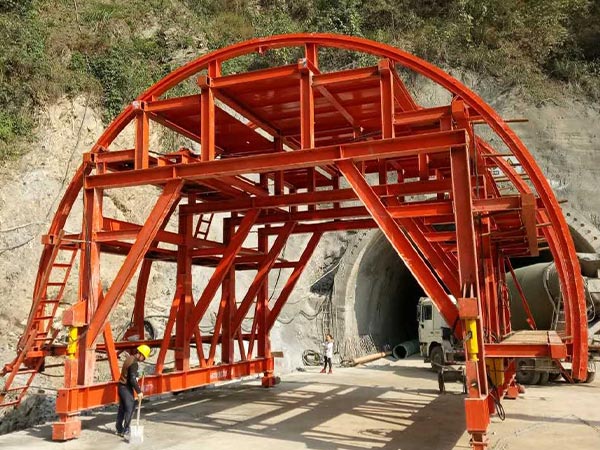How to ensure the thickness of the tunnel second lining
The main part of the general construction inside the tunnel is the second lining, which is the secondary lining. The main structure of the tunnel lining trolley is a reinforced concrete structure, which forms the main body of the tunnel support, and is the permanent support of the tunnel. Its design life follows the design life of the tunnel Keep the same, so how to ensure the thickness of the second lining of the tunnel?
The second lining means that when the external support of the tunnel is completed, the reinforced mesh is arranged around the tunnel, and then the second liner is used to seal the mold, and the concrete is poured at the same time. Finally, an integral reinforced concrete structure is formed around the tunnel to bear the upper stress 3. The effect of leaving enough space for the passage of the lower part, let’s take a specific look at how to ensure the thickness of the second lining of the tunnel, right?
1. Concrete transportation
The concrete is commercial concrete, which is labeled according to the design requirements. Generally, it is C30 and the anti-seepage level is above W7. For small tunnels, after the concrete is transported to the opening, it is sent to the working surface by rail-type concrete delivery trucks and then poured into the warehouse for pouring.

2. Concrete pouring and vibration
Before entering the warehouse, wet the bedrock or concrete joints with water, and evenly lay a layer of graded concrete with the same label thickness of not less than 10cm, and then pave the concrete in layers. The concrete is manually closed.
The pouring of concrete can be carried out by tiling method or step method, according to a certain thickness, order, direction, layered, and the pouring level is smooth, the step width of the step method construction should not be less than 2m, the thickness of the concrete pouring layer is about 50cm, The concrete entering the warehouse should be timely closed and vibrated, and should not be piled up. If there is coarse aggregate stacked in the warehouse, it should be evenly distributed in the mortar more places, but should not be covered with cement mortar, so as not to cause honeycomb, pouring on the inclined surface When concrete, it should start from a low place, and the pouring surface should be level.

The vibrator adopts an insert vibrator, which should be closed first and then vibrated. It is strictly forbidden to replace the position with vibrator. The operation of the vibrator follows the principle of “fast insertion and slow pull”, and the lower concrete is inserted about 5cm. The distance between the inserted concrete should not exceed 1.5 times the effective radius of the vibrator, and the distance from the formwork should not be less than 1/2 of the effective radius of the vibrator. The insertion position is in a plum-shaped arrangement, and the steel bars and embedded parts must not be touched. The surroundings of the parts are supplemented by artificial vibration when necessary, and the vibration should be inserted into the concrete vertically in sequence. If it is slightly tilted, the tilt direction should be consistent to avoid leakage vibration.
3. Wipe the bottom plate
The bottom plate should maintain its flatness. Generally, the upper side of the bottom plate will be supplemented by the design of internal roads. The surface cleaning requirements are relatively low or no surface is required. However, if the internal roads are not designed, the surface of the surface needs to be kept flat and collected according to the slope of the design requirements. The surface is generally set by vibrating beam support in the steel pipe. After the flattening, the scraper is used for flattening. The trowel is closed. If the final finish does not meet the requirements, it needs to be smoothed.


